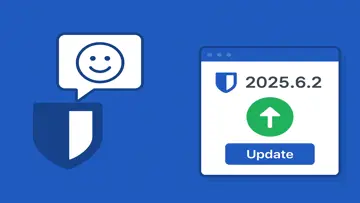Overview of pyOBD
pyOBD is an open-source software application designed for vehicle diagnostics and real-time monitoring. Developed by Martin Hinner, this versatile tool provides users with an easy-to-use interface for accessing data from their car's On-Board Diagnostics (OBD-II) system. Compatible with various vehicles manufactured after 1996, pyOBD allows both casual car owners and professional mechanics to troubleshoot vehicle performance issues efficiently.
Key Features
- Vehicle Compatibility: Supports most OBD-II compliant vehicles, including American, European, and Asian models.
- Real-Time Monitoring: Displays live data from the vehicle's engine control unit (ECU), such as RPM, speed, and coolant temperature.
- DTC Retrieval: Enables users to read Diagnostic Trouble Codes (DTCs) to diagnose issues affecting vehicle performance.
- Clear DTCs: Allows users to reset the check engine light by clearing existing trouble codes.
- User-Friendly Interface: Provides a straightforward GUI that simplifies the process of diagnosing vehicle problems.
- Graphing Capabilities: Visualizes data trends over time to help identify fluctuating performance metrics.
- Logging Features: Supports data logging for later analysis, making it easy to track performance over time.
System Requirements
To run pyOBD smoothly, users need to meet the following system requirements:
- Operating System: Compatible with Windows, macOS, and Linux distributions.
- Python Version: Requires Python 2.7 or Python 3.x installed on the system.
- Terminal Emulator: Requires a terminal emulator for command-line interaction.
- ELM327 Interface: Necessary to connect to the vehicle’s OBD-II system; USB or Bluetooth options are available.
Installation Process
The installation of pyOBD is relatively straightforward. Users can follow these steps to get started:
- Download the latest version of pyOBD from the official repository or website.
- Ensure that Python is installed on your machine. If not, download and install it from the official Python website.
- Extract the downloaded zip file to a preferred directory on your computer.
- Open a terminal or command prompt and navigate to the extracted folder.
- Run the setup command: python setup.py install
User Interface
The user interface of pyOBD is designed for ease of use, featuring a clean layout that presents diagnostic information clearly. Key components include:
- Main Dashboard: Displays an overview of key metrics, such as RPM, speed, and fuel efficiency in real-time.
- DTC Viewer: Allows users to quickly access and interpret diagnostic trouble codes, providing insights into specific issues.
- Status Bar: Provides real-time feedback on connection status with the OBD-II adapter and vehicle communication.
- Error Log: Keeps track of previously detected trouble codes for user reference during future diagnostics.
DTC Analysis
The ability to read and clear DTCs is one of pyOBD's standout features. Users can analyze fault codes by utilizing a built-in code database that translates technical jargon into understandable language. This feature is beneficial for both beginners unfamiliar with automotive terminology and experienced mechanics needing quick access to vehicle diagnostics without extensive research.
Troubleshooting Common Issues
If users encounter issues while using pyOBD, some common troubleshooting tips include:
- No Connection: Ensure that the ELM327 adapter is functioning correctly and is properly connected to the diagnostic port of the vehicle.
- Poor Data Reception: Confirm that the correct protocol has been selected within pyOBD settings; try switching between available protocols if necessary.
- Error Messages: Consult logs for detailed error descriptions; researching specific codes may provide clearer insights into repairs needed.
User Community and Support
The pyOBD community consists of automotive enthusiasts and professionals who contribute to its development through forums, GitHub repositories, and social media groups. Users can access documentation and community support for further assistance with installation or troubleshooting. Additionally, individuals interested in contributing can collaborate on feature enhancements or bug fixes through open-source contributions on GitHub.
User Feedback
User feedback tends to highlight several positives regarding pyOBD's functionality. Many appreciate its robust capabilities without any cost associated with premium features found in commercial alternatives. Even so, some users note occasional connectivity issues with certain vehicles or ELM327 devices. The continuous updates from the developer aim to address these concerns and expand the software’s compatibility range.
If you are looking for a powerful open-source tool for automotive diagnostics that operates effectively across various platforms and vehicle models, pyOBD serves as a solid option in your toolbox. Its capabilities in reading DTCs, live monitoring data, and user-friendly interface make it suitable for anyone interested in understanding their vehicle better.
개요
pyOBD 범주 개발 Martin Hinner개발한에서 오픈 소스 소프트웨어입니다.
pyOBD의 최신 버전은 현재 알려진. 처음 2009-10-16에 데이터베이스에 추가 되었습니다.
다음 운영 체제에서 실행 되는 pyOBD: Windows.
pyOBD 하지 평가 하고있다 우리의 사용자가 아직.
최신 리뷰
|
|
Telegram Desktop
Telegram Desktop을 통한 안전한 메시징 및 파일 공유. |
|
|
Software Informer
Software Informer로 최신 정보 받기 |
|
|
Google Earth Pro
Google 어스 프로로 놀라운 디테일로 세상을 탐험하세요. |
|
|
KMPlayer
Windows 및 Mac을 위한 강력한 멀티미디어 플레이어 |
|
|
Windows PC Health Check
Windows PC 상태 검사로 PC를 원활하게 실행하십시오! |
|
|
SAMSUNG USB Driver for Mobile Phones
삼성 휴대폰을 위한 효율적인 연결 솔루션 |
|
|
UpdateStar Premium Edition
UpdateStar Premium Edition으로 소프트웨어를 최신 상태로 유지하는 것이 그 어느 때보다 쉬워졌습니다! |
|
|
Microsoft Edge
웹 브라우징의 새로운 표준 |
|
|
Google Chrome
빠르고 다재다능한 웹 브라우저 |
|
|
Microsoft Visual C++ 2015 Redistributable Package
Microsoft Visual C++ 2015 재배포 가능 패키지로 시스템 성능을 향상시키십시오! |
|
|
Microsoft Visual C++ 2010 Redistributable
Visual C++ 응용 프로그램 실행을 위한 필수 구성 요소 |
|
|
Microsoft Update Health Tools
Microsoft Update Health Tools: 시스템을 항상 최신 상태로 유지하세요! |





